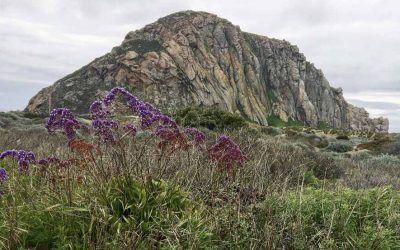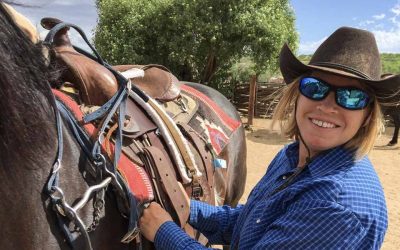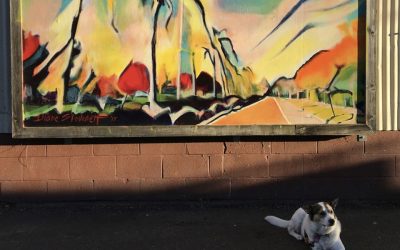The following March, I flew to Anchorage. I’d done my research about the volunteer pilots, nicknamed the Iditarod Air Force (IAF). They sometimes flew volunteers and journalists to remote checkpoints. A pilot heading to Finger Lake offered to drop me at the first checkpoint, Yentna Station Roadhouse. I jumped on it.
Three weeks before the race—always the 1st Saturday in March— mushers pack “drop” bags for each of the 26 checkpoints. People food (whole cheesecakes, breakfast burritos, Twinkies, McDonald’s burgers, and just about anything else that can be vacuum sealed and frozen), dog food (2,000 pounds for each team), and various supplies.
Mushers drop their bags at Air-Land Transport in Anchorage where they’re weighed and piled on various pallets, depending on the designated checkpoint. “It’s like fighting a war,” said pilot Wes Erb. “Your enemy is time and pressure. I think the backstory behind the race is almost as interesting, if not as interesting, as the race itself.”
We landed on a flat, snowy plateau in the dark, coasting to a stop on skis that had replaced wheels. For a while, I remained in my seat absorbing heat clattering from the dashboard. Then the pilot reached over and opened my door. “The roadhouse is that way,” he said, pointing. “Look for a break in the trees.”
I tucked my camera under my parka, put on my headlamp, and tightened the fur ruff on my hood. Wind blew through the trees, an eerie wayward song. Far off, a dog barked; another answered. I headed toward the sounds.
Three weeks before the race—always the 1st Saturday in March— mushers pack “drop” bags for each of the 26 checkpoints. People food (whole cheesecakes, breakfast burritos, Twinkies, McDonald’s burgers, and just about anything else that can be vacuum sealed and frozen), dog food (2,000 pounds for each team), and various supplies.
Mushers drop their bags at Air-Land Transport in Anchorage where they’re weighed and piled on various pallets, depending on the designated checkpoint. “It’s like fighting a war,” said pilot Wes Erb. “Your enemy is time and pressure. I think the backstory behind the race is almost as interesting, if not as interesting, as the race itself.”
We landed on a flat, snowy plateau in the dark, coasting to a stop on skis that had replaced wheels. For a while, I remained in my seat absorbing heat clattering from the dashboard. Then the pilot reached over and opened my door. “The roadhouse is that way,” he said, pointing. “Look for a break in the trees.”
I tucked my camera under my parka, put on my headlamp, and tightened the fur ruff on my hood. Wind blew through the trees, an eerie wayward song. Far off, a dog barked; another answered. I headed toward the sounds.
Call it a wilderness roadhouse, restaurant, or checkpoint 1, mile 53 into the Iditarod. I’d barely shrugged from my parka when Norman D. Vaughan walked in. I’d read his autobiographies With Byrd at the Bottom of the World and My Life of Adventure.
In 1928, a 23-year-old Vaughan convinced Admiral Richard E. Byrd to let him join his expedition to the South Pole. Vaughan was in charge of 97 dogs, becoming the first American to travel by dog sled over the frozen 7th continent.
Later, Byrd named five mountains in Antarctica after members of the research team, including Mount Vaughan. Vaughan finished his last Iditarod at the age of 84, making him the oldest musher to ever cross the finish line in Nome.
He retired from racing in 1984, swapping a sled dog team for a snowmobile. During the race, he stopped in out of the way villages and shared Alaskan history. “Most kids don’t know anything about the origin of the race,” he said. “They’ve never even heard of the serum run.”
In 1925 it seemed as if the unrelenting snowstorms would blow the frozen Alaska territory into the Bering Sea. Yet news traveled with railway speed: Untold Eskimo children in Nome had been exposed to the highly contagious disease diphtheria.
In 1928, a 23-year-old Vaughan convinced Admiral Richard E. Byrd to let him join his expedition to the South Pole. Vaughan was in charge of 97 dogs, becoming the first American to travel by dog sled over the frozen 7th continent.
Later, Byrd named five mountains in Antarctica after members of the research team, including Mount Vaughan. Vaughan finished his last Iditarod at the age of 84, making him the oldest musher to ever cross the finish line in Nome.
He retired from racing in 1984, swapping a sled dog team for a snowmobile. During the race, he stopped in out of the way villages and shared Alaskan history. “Most kids don’t know anything about the origin of the race,” he said. “They’ve never even heard of the serum run.”
In 1925 it seemed as if the unrelenting snowstorms would blow the frozen Alaska territory into the Bering Sea. Yet news traveled with railway speed: Untold Eskimo children in Nome had been exposed to the highly contagious disease diphtheria.
A hospital in Anchorage stocked the only serum in the territory. How could it be shipped to icebound Nome, more than 1,000 miles away, in the shortest possible time? No one knew if a bush plane could function at -40° F. If the plane didn’t make it, neither would the life-saving medicine.
An alternate plan unfolded: The medicine traveled by train for a 300- mile journey to Nenana. From there, 20 fearless mushers and their teams of hard-driving sled dogs transported the serum 674 miles in relay style. It took 5 1⁄2 days. Blizzard conditions sometimes pushed the wind-chill factor to -100° F. The serum arrived frozen but usable, saving the children.
In 1973, mushing enthusiasts devised the 1,049-mile Iditarod to keep the tradition of dog sledding alive. Much more than a race, the event honors the courageous 1925 “serum run” and remains one of the world’s greatest endurance competitions.
Next stop: Skwentna, checkpoint 2. Thirty miles down the trail at the confluence of the Skwentna and Yentna Rivers. Stakes marked the trail, most often painted fluorescent orange. I’d heard about teams veering off course—of other teams following the scent of dogs gone astray; both teams losing their bearings on the frozen tundra.
Mushers can get pinned by wind gusts that cut visibility to zero. Snow as fine as powder stings their eyes. Frostbite eats at fingers and toes. Hypothermia creeps in. Even the most well-thought-out strategy can crash in an instant. A full fourth of the entrants won’t finish.
I hitched a plane ride to Finger Lake. Checkpoint 3, mile 123. Dozens of teams were taking a break due to warm weather. Dogs run best when temperatures are -20° to zero. Higher, and they risk overheating.
I spotted Libby Riddles applying ointment to a dog’s paw. She wore thin white cotton gloves and shiny lip balm. A purple visor set off straw- blond hair pulled into a loose ponytail. Gear was piled around her sled: snowshoes, open duffels, intact bags of dog food.
An alternate plan unfolded: The medicine traveled by train for a 300- mile journey to Nenana. From there, 20 fearless mushers and their teams of hard-driving sled dogs transported the serum 674 miles in relay style. It took 5 1⁄2 days. Blizzard conditions sometimes pushed the wind-chill factor to -100° F. The serum arrived frozen but usable, saving the children.
In 1973, mushing enthusiasts devised the 1,049-mile Iditarod to keep the tradition of dog sledding alive. Much more than a race, the event honors the courageous 1925 “serum run” and remains one of the world’s greatest endurance competitions.
Next stop: Skwentna, checkpoint 2. Thirty miles down the trail at the confluence of the Skwentna and Yentna Rivers. Stakes marked the trail, most often painted fluorescent orange. I’d heard about teams veering off course—of other teams following the scent of dogs gone astray; both teams losing their bearings on the frozen tundra.
Mushers can get pinned by wind gusts that cut visibility to zero. Snow as fine as powder stings their eyes. Frostbite eats at fingers and toes. Hypothermia creeps in. Even the most well-thought-out strategy can crash in an instant. A full fourth of the entrants won’t finish.
I hitched a plane ride to Finger Lake. Checkpoint 3, mile 123. Dozens of teams were taking a break due to warm weather. Dogs run best when temperatures are -20° to zero. Higher, and they risk overheating.
I spotted Libby Riddles applying ointment to a dog’s paw. She wore thin white cotton gloves and shiny lip balm. A purple visor set off straw- blond hair pulled into a loose ponytail. Gear was piled around her sled: snowshoes, open duffels, intact bags of dog food.
In 1985, a series of storms gnawed on land and sky, all but shutting down the race. Mushers spent a brutal night camping in the blizzard. “I kept talking to myself,” Riddles later told reporters. “Telling myself what to do.”
While others hunkered in place, Riddles and her team of 16 dogs braved the vicious ground-storm and hypothermic temperatures. She became the first woman to win the Iditarod. Her time: 18 days, 20 minutes, 17 seconds.
I bought the tee-shirt: “Alaska: Where Men Are Men and Woman Win the Iditarod.”
Stay tuned for Part III
While others hunkered in place, Riddles and her team of 16 dogs braved the vicious ground-storm and hypothermic temperatures. She became the first woman to win the Iditarod. Her time: 18 days, 20 minutes, 17 seconds.
I bought the tee-shirt: “Alaska: Where Men Are Men and Woman Win the Iditarod.”
Stay tuned for Part III





